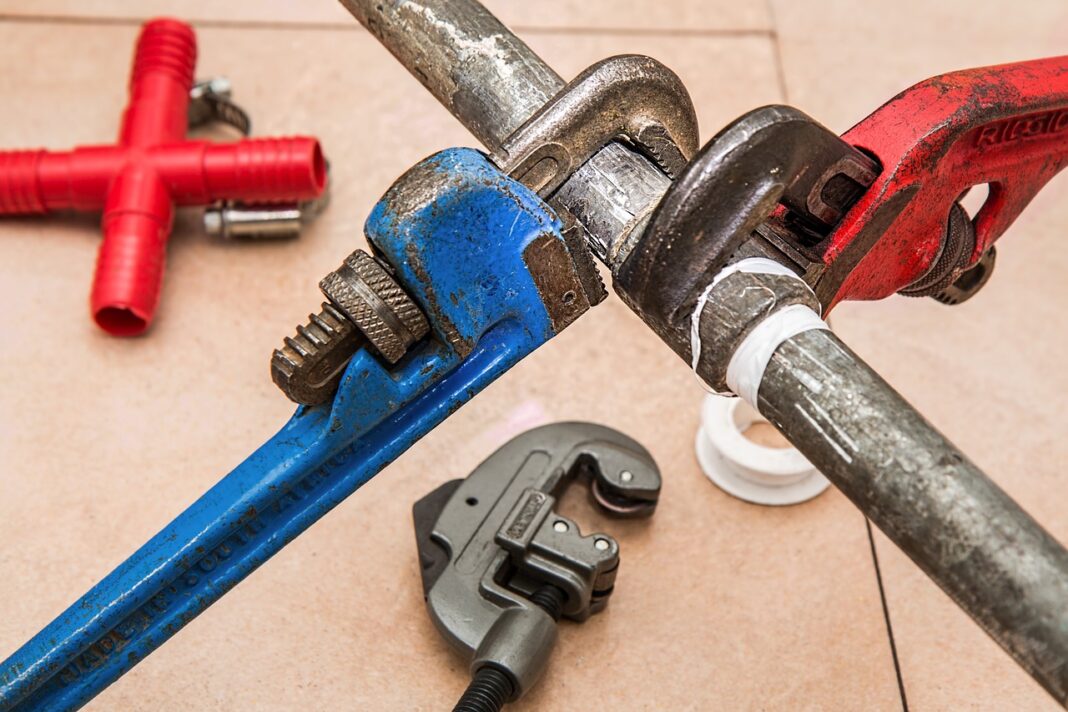If you own a home, there are probably a dozen little things you keep an eye on: your roof, your HVAC, the car’s oil level, the battery in the smoke detector. But ask yourself this – when was the last time you checked your plumbing?
Most people don’t think about their pipes until there’s water where it shouldn’t be. And by then? It’s already too late.
I’ve been in residential plumbing for more than a decade. And if there’s one thing I’ve seen over and over again, it’s that major plumbing disasters almost always start small. A slow drip behind the wall. A barely-noticed stain under the kitchen cabinet. A toilet that “sometimes” rocks when you sit on it.
That’s where the damage begins – and that’s why maintenance isn’t optional.
The Hidden Cost of “Out of Sight, Out of Mind”
Water damage is one of the most expensive and invasive problems a homeowner can face. It seeps silently. It weakens floors, swells cabinetry, invites mold and mildew. And worse? It often goes undetected for weeks or months.
One client ignored a musty smell under the sink for months – by the time we opened it up, the cabinet was mush, the drywall behind it was green, and the adjacent hardwood floor was warped beyond repair. The repair cost? Over $18,000. The root cause? A $2 cracked P-trap.
Plumbing is Not a Set-It-and-Forget-It System
It’s easy to assume that because your plumbing is hidden, it’s fine. Pipes don’t rust like car parts, right? Wrong.
Water pressure, temperature swings, mineral content, and plain old time wear down every component in your system. And if you haven’t had a professional look over your plumbing in the last few years, odds are good that something is already deteriorating.
Just like with your car or your roof, preventive care saves thousands compared to crisis repair.
What a Basic Plumbing Maintenance Plan Should Cover
Not all homeowners need a top-to-bottom overhaul, but these are the key checkpoints I always recommend:
- Inspecting exposed pipes (especially under sinks and in basements) for corrosion or leaks
- Testing main water shut-off valves and pressure reducing valves (PRVs) for smooth operation
- Flushing sediment from the water heater
- Checking for signs of slow leaks behind toilets and under fixtures
- Verifying that hose bibs, exterior spigots, and irrigation lines are protected and sealed
- Inspecting drain speeds – slow drainage can indicate early-stage clogs or vent issues
- Looking at faucet aerators, seals, and garbage disposal connections
A good inspection will usually start with your main shut-off and PRV valve, since failure here can affect your entire plumbing system.
If you’re unsure about your setup, it’s worth reviewingplumbing valve maintenance to understand what a tech will look for and what may require replacement.
The High Price of Doing Nothing
Still thinking, “Yeah, but I haven’t had a problem yet”?
Here’s what I’ve personally seen in just the last year:
- A seized shut-off valve that flooded a kitchen – $12,000 in repairs
- A faulty PRV that spiked pressure to 120 PSI, causing a pipe joint to blow in the attic – $21,000 claim
- A failed hose bib in winter that cracked the foundation wall – $8,500 in emergency work
- Mold behind a toilet from an old wax ring leak – $6,300 for remediation, plus floor and baseboard replacement
None of these homeowners had ever scheduled routine maintenance. All of them now do.
Why Homeowners Skip Plumbing Maintenance
Let’s be honest. People skip plumbing checks for a few key reasons:
- “If I don’t see a leak, there’s no problem.”
- “My house isn’t that old.”
- “It seems like an upsell – the system works fine.”
I get it. As a plumber, even my own neighbors have admitted they avoid calling us until something breaks. But here’s the problem: plumbing issues don’t break cleanly. They cascade. A minor drip leads to rot, which leads to mold, which requires demolition.
And insurance? It often doesn’t cover long-term or “preventable” damage. One client was shocked to learn that their mold remediation wasn’t covered because the adjuster found signs the leak had been ongoing for months.
What You Can Do Yourself (And What You Shouldn’t)
There are a few basic things any homeowner can monitor:
- Check under every sink monthly.
- Open vanity cabinets and smell for mildew.
- Look behind your toilets at the valves – are they rusting?
- Know where your main shut-off is. Operate it every 6 months to keep it from seizing.
But when it comes to pressure checks, PRV calibration, fixture replacement, or diagnosing slow leaks, call in a pro.
As one of the team members at Super Brothers mentioned recently:
“We’ve had more than one customer cry when we showed them how bad the leak really was. They thought they were calling us for a clogged drain.”
When to Schedule Maintenance
If your home is:
- More than 10 years old
- Hasn’t had a plumbing inspection in over 2 years
- Recently had issues with pressure, slow drains, or water stains
- Has older fixtures or galvanized pipes
- Or you’re unsure where the main shut-off is…
…it’s time.
Peace of Mind Isn’t Just a Slogan
Look, no one gets excited to schedule plumbing maintenance. It’s not like painting your kitchen or installing new lighting. But nothing – nothing – is more stressful than coming home to water pouring down the stairs.
A small investment now saves your budget – and your sanity – later.
So if you’ve been putting it off, don’t.
Because water waits for no one.


